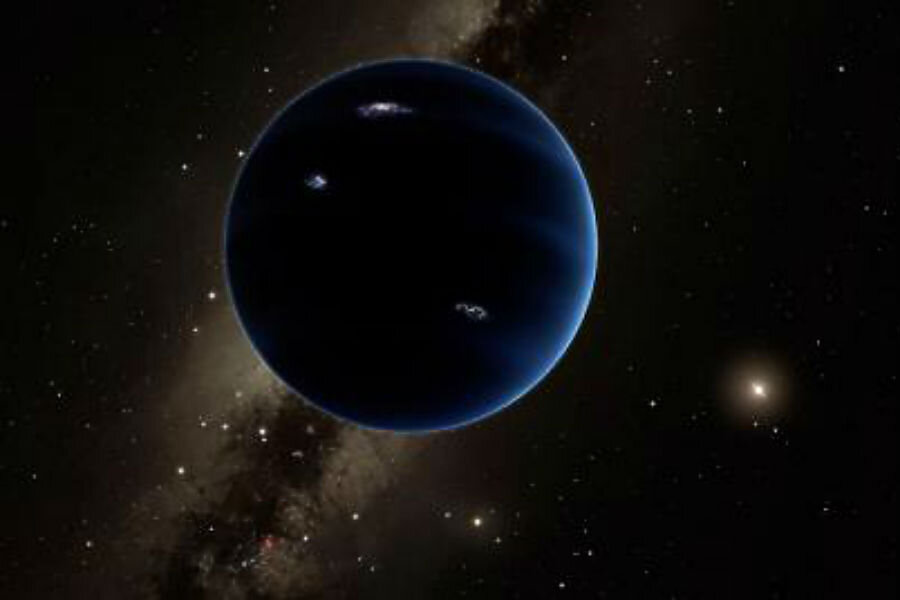Does our solar system have a ninth planet?
Loading...
A report published Wednesday in The Astronomical Journal suggests that our solar system may in fact have a ninth planet.
The analysis, authored by California Institute of Technology Division of Geological and Planetary Sciences professors Michael Brown and Konstantin Batygin, suggests that the distinct orbits of several Kuiper Belt objects (KBOs) could be explained by the presence of a planet many times more massive than Earth.
The Kuiper Belt, a region of the solar system beyond the orbit of Neptune, is made up of thousands of small KBOs, but nothing near the size of the proposed planet has yet been discovered. The International Astronomical Union (IAU) does currently recognize five dwarf planets around the Kuiper Belt: Ceres, Eris, Haumea, Makemake, and former planet Pluto, although Mr. Brown estimates there are scores of bodies that could qualify as dwarfs as well.
Brown and Mr. Batygin’s research is based solely on computer modeling, but they estimate that if it is in fact real, the new planet could be viewed on telescopes within five years. Despite the potential planet’s large mass – slightly smaller than Neptune’s – its distance from the sun would make it very difficult to view due to a lack of light where it orbits and therefore would require a more direct approach for astronomers to see it.
The proposal for the new member of the solar system is not the first experience Brown has had with far-away planets. After his team’s discovery of Eris, a trans-Neptunian object, it was initially announced as the tenth planet in the solar system. However, due to the similar size and mass of Eris in comparison with Pluto, the IAU voted in 2006 to redefine what a planet was, famously stripping Eris and Pluto of the planetary title and reducing the solar system’s planet count to eight.
Now, though, Brown’s work could bring that number back up. While the new planet has yet to be confirmed, Brown and Batygin hope their results could point astronomers in the right direction to find "Planet Nine."
"For the first time in more than 150 years, there's good evidence that the planetary census of the solar system is incomplete," Batygin told The Associated Press (AP). The last true planet discovered was Neptune in 1846.
"I want to know what it's like. I want to see that it's really there," Brown told National Public Radio (NPR) regarding Planet Nine. "It will hurt when somebody finds it and it's not me – but I assume it's going to happen, and I'm willing to feel that pain."
Not everyone in the astronomical community is convinced that Brown and Batygin’s analysis necessarily suggests the presence of a massive ninth planet, though. The work of Scott Sheppard, a researcher of small celestial bodies at the Carnegie Institution for Science, was a foundation for Brown and Batygin’s study. But Sheppard remains unconvinced that the pair’s research demonstrates anything definitive yet.
“I think it's still a tossup if it's really out there or not,” he told NPR. “I think we just need more data. Hopefully within the next few years, we'll really be able to nail this down.”
He did say, however, that "It leaves me thinking that the possibility of there being this super-Earth or mini-Neptune out there is more and more real now.”
Even with the lack of hard evidence, Brown remains convinced that his and Batygin’s research will eventually lead to the discovery of the ninth planet.
"It's such a long history of people being basically wrong that standing up and saying we're right this time makes us almost look crazy," Brown told the AP. "Except I'm going to stand up and say we're actually right this time. The evidence for the first time is actually very good that this thing is actually out there."
"I'm willing to take bets on anyone who's not a believer," he said to NPR.







